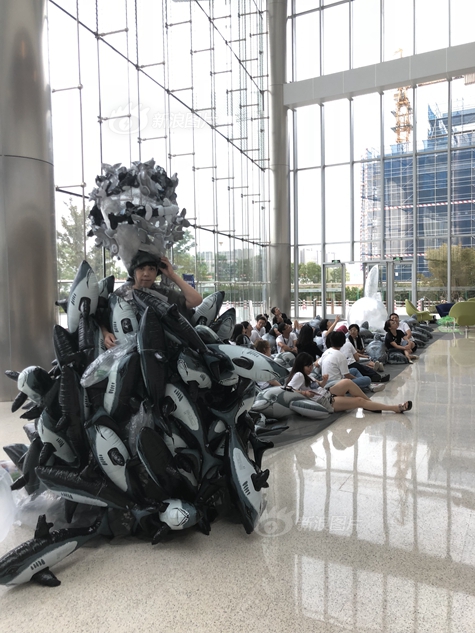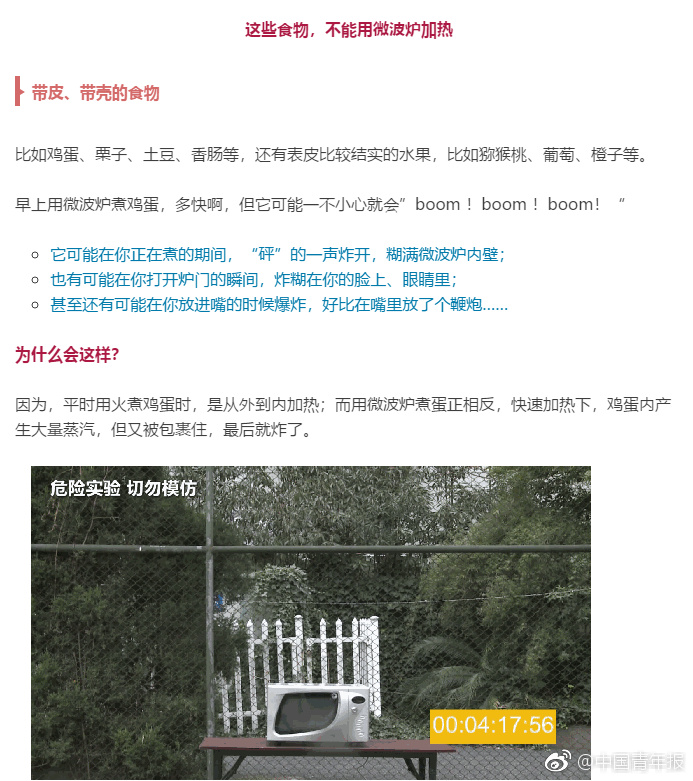
working principle of pure electric vehicles: Compared with traditional fuel-powered vehicles, pure electric vehicles have safety, energy saving, maintenance and use With the characteristics of low cost, the major key systems that constitute pure electric vehicles can correspond to fuel vehicles. The following is the corresponding description of the major systems of pure electric vehicles and the corresponding systems of fuel vehicles.
Pure electric steamThe principle of car structure. Traditional internal combustion engine cars are mainly composed of four parts: engine, chassis, body and electrical equipment. Compared with fuel vehicles, the structure of pure electric vehicles mainly adds an electric drive control system and eliminates the engine. The transmission mechanism has changed.
The characteristics of pure electric vehicles are as follows: Environmental protection. Electric vehicles use power battery packs and motors to drive power. It will not produce exhaust gas during operation and does not exhaust pollution, which is very beneficial to environmental protection and air cleanliness. It can be said that it is almost "zero pollution".
The main feature of pure electric vehicles is its high voltage. Since the energy supply of pure electric vehicles is power batteries, the design of many systems on vehicles is also implemented around power batteries and high voltages.

Pure electric vehicles refers to cars that are completely driven by motors. The electric energy driven by the motor comes from the on-board rechargeable battery system or other energy storage devices. .
As the name implies, pure electric vehicles are vehicles driven purely by electricity without other energy, such as gasoline, diesel, etc. It can be used by household power supply.(Ordinary socket), special charging pile or specific charging place for charging to meet the daily driving needs.
Pure electric vehicles refer to passenger cars that use on-board batteries as the power output and drive wheels with motors to meet the requirements of road traffic, safety regulations and national standards. Because the environmental protection and energy consumption are relatively small compared with traditional fuel vehicles, its prospects are broadly optimistic, but it is not very popular at present and belongs to the development stage.
Automobile engines are machines that power cars and are the heart of automobiles, affecting the dynamics, economy and environmental protection of cars. According to different power sources, automobile engines can be divided into diesel engines, gasoline engines, electric vehicle motors and hybrid engines.A diesel engine is an engine that burns diesel to obtain energy release.
The forms of automobile generators include: DC generators and alternators, which are divided into synchronous generators and asynchronous generators (rarely used); alternators can also be divided into single-phase generators and three-phase generators. There are many kinds of generators.
Automotive generators can be divided into DC generators and alternator generators. Because alternators are superior to DC generators in many aspects, DC generators have been eliminated.
The forms of automobile generators include: DC generators and alternators. Alternators are divided into synchronous generators and asynchronous generators (rarely used); alternators can also be divided into single-phase generators and three-phase generators. There are many kinds of generators.
The generator is the main power supply for automotive electrical equipment.During the normal operation of the car, the generator supplies power to electrical equipment other than the starter and charges the battery. Most of the generators used in cars are three-phase alternators.
The generator is a mechanical equipment that converts other forms of energy into electrical energy. It is composed of turbines, steam turbines, wood The oil machine or other power machinery drive converts the energy generated by water flow, air flow, fuel combustion or nuclear fission into mechanical energy and transmits it to the generator, and then converts it into electrical energy by the generator.
Automotive generators are also based on the principle of electromagnetic induction. When the external circuit energized the excitation winding through the electric brush to produce magnetismField, when the rotor rotates, the magnetic flux changes alternately in the stator winding. According to the principle of electromagnetic induction, it can be seen that alternating induced electromotive potential is generated in the three-phase winding of the stator.
The working principle of the automobile alternator is to connect and assemble the stator and rotor of the generator by the bearing and the end cover, so that the rotor can rotate in the stator and make the movement of cutting the magnetic line, thus generating an induced electric potential, which is led out through the terminal and connected to the loop, and an electric current is generated.
1. Automobile generators are also based on the principle of electromagnetic induction. When the external circuit energized the excitation winding through the brush to generate a magnetic field, when the rotor rotates, the magnetic flux alternately changes in the stator winding.According to the principle of electromagnetic induction, it can be seen that alternating induction electromotive potential is generated in the three-phase winding of the stator.
2. The gasoline engine drives the generator to run and converts the energy of gasoline into electricity. In the cylinder of the gasoline engine, the mixed gas burns violently, and the volume expands rapidly, pushing the piston down to work.
3. The working principle of the automobile generator is that when the external circuit energizes the excitation winding through the brush, a magnetic field is generated, so that the claw pole is magnetized into n poles and s poles. When the rotor rotates, the magnetic flux changes alternately in the stator winding. According to the principle of electromagnetic induction, it can be seen that alternating induced electromotive potential is generated in the three-phase winding of the stator.
4. The working principle of the automobile generator is: a device made by the principle of electromagnetic induction and converted from kinetic energy into electrical energy.
5. The working principle of the automobile alternator is that the stator and rotor of the generator are connected and assembled by the bearing and the end cover, so that the rotor can rotate in the stator and make the movement of cutting the magnetic line, thus generating an induced electric potential, which is led out through the terminal and connected to the loop, and an electric current is generated.
6. Principle analysis of automobile generators: When the external circuit energizes the excitation winding through the electric brush, a magnetic field is generated, so that the claw poles are magnetized into N poles and S poles. When the rotor rotates, the magnetic flux changes alternately in the stator winding. According to the principle of electromagnetic induction, it can be seen that alternating induced electromotive potential is generated in the three-phase winding of the stator.
*HS code-based reclassification services-APP, download it now, new users will receive a novice gift pack.
working principle of pure electric vehicles: Compared with traditional fuel-powered vehicles, pure electric vehicles have safety, energy saving, maintenance and use With the characteristics of low cost, the major key systems that constitute pure electric vehicles can correspond to fuel vehicles. The following is the corresponding description of the major systems of pure electric vehicles and the corresponding systems of fuel vehicles.
Pure electric steamThe principle of car structure. Traditional internal combustion engine cars are mainly composed of four parts: engine, chassis, body and electrical equipment. Compared with fuel vehicles, the structure of pure electric vehicles mainly adds an electric drive control system and eliminates the engine. The transmission mechanism has changed.
The characteristics of pure electric vehicles are as follows: Environmental protection. Electric vehicles use power battery packs and motors to drive power. It will not produce exhaust gas during operation and does not exhaust pollution, which is very beneficial to environmental protection and air cleanliness. It can be said that it is almost "zero pollution".
The main feature of pure electric vehicles is its high voltage. Since the energy supply of pure electric vehicles is power batteries, the design of many systems on vehicles is also implemented around power batteries and high voltages.

Pure electric vehicles refers to cars that are completely driven by motors. The electric energy driven by the motor comes from the on-board rechargeable battery system or other energy storage devices. .
As the name implies, pure electric vehicles are vehicles driven purely by electricity without other energy, such as gasoline, diesel, etc. It can be used by household power supply.(Ordinary socket), special charging pile or specific charging place for charging to meet the daily driving needs.
Pure electric vehicles refer to passenger cars that use on-board batteries as the power output and drive wheels with motors to meet the requirements of road traffic, safety regulations and national standards. Because the environmental protection and energy consumption are relatively small compared with traditional fuel vehicles, its prospects are broadly optimistic, but it is not very popular at present and belongs to the development stage.
Automobile engines are machines that power cars and are the heart of automobiles, affecting the dynamics, economy and environmental protection of cars. According to different power sources, automobile engines can be divided into diesel engines, gasoline engines, electric vehicle motors and hybrid engines.A diesel engine is an engine that burns diesel to obtain energy release.
The forms of automobile generators include: DC generators and alternators, which are divided into synchronous generators and asynchronous generators (rarely used); alternators can also be divided into single-phase generators and three-phase generators. There are many kinds of generators.
Automotive generators can be divided into DC generators and alternator generators. Because alternators are superior to DC generators in many aspects, DC generators have been eliminated.
The forms of automobile generators include: DC generators and alternators. Alternators are divided into synchronous generators and asynchronous generators (rarely used); alternators can also be divided into single-phase generators and three-phase generators. There are many kinds of generators.
The generator is the main power supply for automotive electrical equipment.During the normal operation of the car, the generator supplies power to electrical equipment other than the starter and charges the battery. Most of the generators used in cars are three-phase alternators.
The generator is a mechanical equipment that converts other forms of energy into electrical energy. It is composed of turbines, steam turbines, wood The oil machine or other power machinery drive converts the energy generated by water flow, air flow, fuel combustion or nuclear fission into mechanical energy and transmits it to the generator, and then converts it into electrical energy by the generator.
Automotive generators are also based on the principle of electromagnetic induction. When the external circuit energized the excitation winding through the electric brush to produce magnetismField, when the rotor rotates, the magnetic flux changes alternately in the stator winding. According to the principle of electromagnetic induction, it can be seen that alternating induced electromotive potential is generated in the three-phase winding of the stator.
The working principle of the automobile alternator is to connect and assemble the stator and rotor of the generator by the bearing and the end cover, so that the rotor can rotate in the stator and make the movement of cutting the magnetic line, thus generating an induced electric potential, which is led out through the terminal and connected to the loop, and an electric current is generated.
1. Automobile generators are also based on the principle of electromagnetic induction. When the external circuit energized the excitation winding through the brush to generate a magnetic field, when the rotor rotates, the magnetic flux alternately changes in the stator winding.According to the principle of electromagnetic induction, it can be seen that alternating induction electromotive potential is generated in the three-phase winding of the stator.
2. The gasoline engine drives the generator to run and converts the energy of gasoline into electricity. In the cylinder of the gasoline engine, the mixed gas burns violently, and the volume expands rapidly, pushing the piston down to work.
3. The working principle of the automobile generator is that when the external circuit energizes the excitation winding through the brush, a magnetic field is generated, so that the claw pole is magnetized into n poles and s poles. When the rotor rotates, the magnetic flux changes alternately in the stator winding. According to the principle of electromagnetic induction, it can be seen that alternating induced electromotive potential is generated in the three-phase winding of the stator.
4. The working principle of the automobile generator is: a device made by the principle of electromagnetic induction and converted from kinetic energy into electrical energy.
5. The working principle of the automobile alternator is that the stator and rotor of the generator are connected and assembled by the bearing and the end cover, so that the rotor can rotate in the stator and make the movement of cutting the magnetic line, thus generating an induced electric potential, which is led out through the terminal and connected to the loop, and an electric current is generated.
6. Principle analysis of automobile generators: When the external circuit energizes the excitation winding through the electric brush, a magnetic field is generated, so that the claw poles are magnetized into N poles and S poles. When the rotor rotates, the magnetic flux changes alternately in the stator winding. According to the principle of electromagnetic induction, it can be seen that alternating induced electromotive potential is generated in the three-phase winding of the stator.
*How to comply with origin rules
author: 2024-12-24 01:11Middle East trade compliance platform
author: 2024-12-24 00:50Top global trade data insights
author: 2024-12-23 23:45Sourcing opportunities filtered by HS code
author: 2024-12-23 23:11How to track multiple supply chain tiers
author: 2024-12-24 01:20Global trade data integration services
author: 2024-12-24 00:34Processed foods HS code mapping
author: 2024-12-24 00:20Advanced import export metric tracking
author: 2024-12-23 23:05Global trade contract verification
author: 2024-12-23 22:58 Trade data for risk scoring models
Trade data for risk scoring models
961.22MB
Check Machine tools HS code classification
Machine tools HS code classification
744.23MB
Check Livestock feed HS code references
Livestock feed HS code references
161.66MB
Check Customs duty prediction models
Customs duty prediction models
131.27MB
Check How to access restricted trade data
How to access restricted trade data
254.41MB
Check Industrial cleaning supplies HS code checks
Industrial cleaning supplies HS code checks
722.89MB
Check Import export cost optimization
Import export cost optimization
396.28MB
Check Biodegradable materials HS code verification
Biodegradable materials HS code verification
284.17MB
Check Global trade data-driven forecasting
Global trade data-driven forecasting
345.26MB
Check How to improve trade compliance
How to improve trade compliance
214.92MB
Check Trade intelligence for industrial equipment
Trade intelligence for industrial equipment
889.34MB
Check HS code-driven route-to-market planning
HS code-driven route-to-market planning
928.71MB
Check HS code directory for imports
HS code directory for imports
738.71MB
Check Food and beverage HS code mapping
Food and beverage HS code mapping
719.63MB
Check How to simplify HS code selection
How to simplify HS code selection
418.22MB
Check Customs broker performance analysis
Customs broker performance analysis
345.49MB
Check How to measure supplier performance
How to measure supplier performance
498.42MB
Check How to secure competitive freight rates
How to secure competitive freight rates
377.63MB
Check Export data analysis for consumer goods
Export data analysis for consumer goods
423.11MB
Check Global trade content syndication
Global trade content syndication
476.24MB
Check How to use analytics for HS classification
How to use analytics for HS classification
854.97MB
Check Customs procedure optimization
Customs procedure optimization
943.22MB
Check How to integrate trade data with RPA
How to integrate trade data with RPA
391.42MB
Check Trade data for food and beverage industry
Trade data for food and beverage industry
669.59MB
Check Biotech imports HS code classification
Biotech imports HS code classification
761.82MB
Check Export licenses tied to HS codes
Export licenses tied to HS codes
889.63MB
Check Sawmill products HS code references
Sawmill products HS code references
975.48MB
Check HS code-driven tariff arbitrage strategies
HS code-driven tariff arbitrage strategies
837.87MB
Check How to minimize supply chain disruptions
How to minimize supply chain disruptions
488.85MB
Check Benchmarking competitors’ trade volumes
Benchmarking competitors’ trade volumes
777.92MB
Check Predictive trade route realignment
Predictive trade route realignment
599.51MB
Check Raw leather HS code references
Raw leather HS code references
236.96MB
Check Supply chain disruption tracking
Supply chain disruption tracking
529.88MB
Check How to align trade data with marketing
How to align trade data with marketing
576.62MB
Check HS code-based customs dispute resolution
HS code-based customs dispute resolution
174.78MB
Check HS code alignment with import licensing
HS code alignment with import licensing
251.21MB
Check
Scan to install
HS code-based reclassification services to discover more
Netizen comments More
407 HS code impact on trade finance
2024-12-24 01:09 recommend
2393 International vendor verification
2024-12-24 00:33 recommend
1194 Textile finishing HS code analysis
2024-12-24 00:20 recommend
2318 Trade flow analysis software
2024-12-24 00:15 recommend
1732 Electronics global trade by HS code
2024-12-24 00:12 recommend